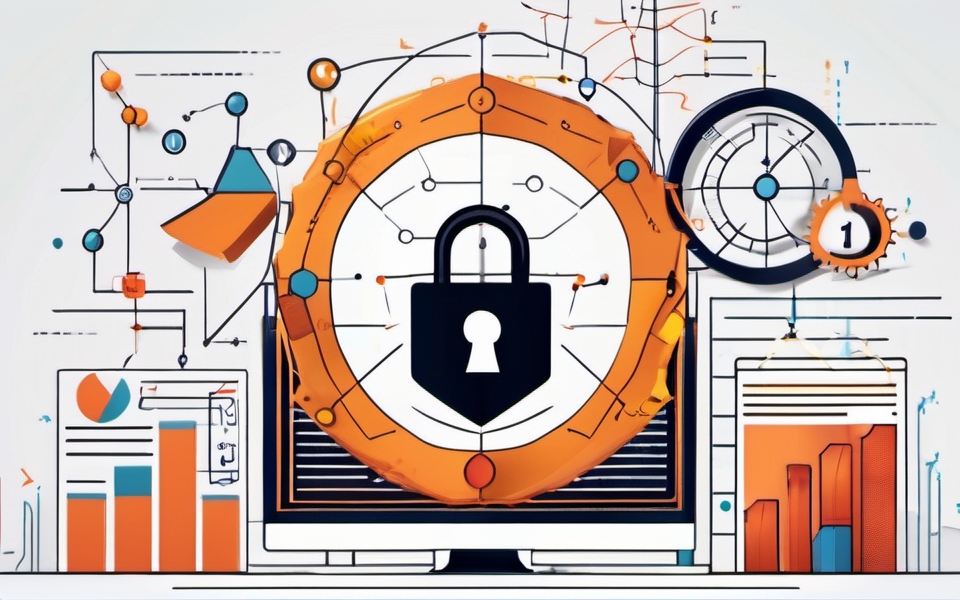Are you scared of cyberattacks? 🤯 You should be! They’re lurking in the shadows, waiting to steal your data, disrupt your operations, and damage your reputation. But don’t despair! You’re not defenseless. By adopting a multi-layered cybersecurity strategy, you can build an impenetrable fortress against even the most sophisticated threats.
Imagine this: Your business is running smoothly, customers are happy, and profits are soaring. Suddenly, BAM! A cyberattack hits, crippling your systems, exposing sensitive information, and costing you a fortune. This isn’t just a hypothetical scenario – it’s happening to businesses big and small every day. But it doesn’t have to be your story.
Fortifying Your Digital Fortress: A Multi-Layered Approach
The first step in securing your business is to understand the various cyber threats you face. These threats come in many shapes and sizes, but here are a few common ones:
- Malware: Ransomware, spyware, and viruses are all types of malicious software designed to infiltrate your systems and steal data, hold it hostage, or spy on your activities.
- Phishing: This attack involves deceptive emails, messages, or websites designed to trick users into revealing sensitive information like passwords, credit card details, or bank account numbers.
- Denial-of-service (DoS) attacks: These attacks overwhelm your website or network with traffic, making it inaccessible to legitimate users.
These threats require a comprehensive defense strategy. Here’s how you can build your cyber fortress:
Strengthening Your Walls: Implementing Essential Security Measures
The core of your security lies in implementing strong security measures. These act like your walls, keeping the bad guys out:
1. Robust Password Policies:
- Use strong and unique passwords for each of your online accounts.
- Encourage employees to use password managers to securely store and manage their passwords.
- Implement a password complexity policy, requiring users to create passwords with a combination of uppercase and lowercase letters, numbers, and symbols.
2. Secure Network Configuration:
- Enable firewalls on all your devices and your network.
- Regularly update your network equipment with the latest security patches.
- Implement a strong network access control list (ACL) to control who and what can access your network.
3. Multi-Factor Authentication (MFA):
- Turn on MFA for all your critical accounts, like email, cloud storage, and bank accounts.
- Require users to provide multiple factors of authentication before they can access their accounts, such as a password, a code sent to their phone, or a biometric scan.
Deploying Your Defense Force: Using Security Software and Tools
Think of security software as your defense force, constantly patrolling and detecting threats.
1. Anti-Malware Software:
- Install reliable antivirus software on all your devices.
- Use anti-malware solutions to detect and remove malicious software before it can do any damage.
- Keep your antivirus software updated with the latest virus signatures.
2. Intrusion Detection and Prevention Systems (IDS/IPS):
- Implement IDS/IPS solutions to detect suspicious activity on your network.
- Configure them to block or alert you to potential attacks.
- Monitor the alerts from your IDS/IPS to investigate and address any security threats.
Staying Ahead of the Enemy: Proactive Cybersecurity Strategies
Your cybersecurity strategy isn’t a one-time effort. You must continuously stay ahead of the latest threats:
1. Employee Training and Awareness:
- Train your employees on cybersecurity best practices, such as identifying phishing scams, understanding social engineering tactics, and following secure password guidelines.
- Implement regular phishing simulations to test your employees’ awareness and reinforce training.
2. Patch Management and Software Updates:
- Stay vigilant about patching your software with the latest security updates.
- Automate your software update process as much as possible.
- Prioritize updating critical systems first to reduce your vulnerability to attack.
Monitoring Your Fortress: Implementing Continuous Monitoring
Continuously monitoring your systems for signs of intrusion is crucial for staying one step ahead:
1. Security Information and Event Management (SIEM):
- Implement a SIEM solution to centralize security data from all your devices and networks.
- Use SIEM to detect suspicious activity and analyze security logs for potential threats.
- Alert your security team of any abnormal or suspicious activity.
Key Takeaways:
- A layered cybersecurity strategy is essential to protecting your business from cyber threats.
- Strong password policies, secure network configurations, and multi-factor authentication are essential building blocks.
- Security software, intrusion detection, and prevention systems are critical tools for defending your digital fortress.
- Proactive measures like employee training, software updates, and vulnerability management are crucial for staying ahead of threats.
- Continuous monitoring with SIEM solutions is vital for early detection of suspicious activity.
By embracing these strategies and actively pursuing ongoing cybersecurity improvements, you can equip yourself to defend against today’s ever-evolving threats and confidently build a future-proof business.




